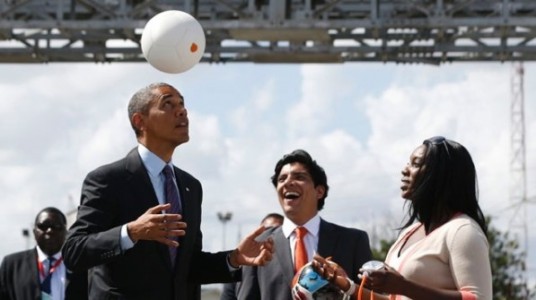SOCCKET is a soccer ball that harnesses and stores energy from play for later use as portable power source in resource-poor areas. The sOccket is a soccer ball that captures the energy during game play to charge LEDs and small batteries. After playing with the ball, the child can return home and use the ball to connect a LED lamp to read, study, or illuminate the home.
The sOccket is a soccer ball that captures the energy during game play to charge LEDs and small batteries. After playing with the ball, the child can return home and use the ball to connect a LED lamp to read, study, or illuminate the home.
It’s a story about a pair of young Harvard graduates who said it was possible to harness the world’s love for soccer to generate electricity for poor kids. They called their product the Soccket, formed a for-profit company, and began selling it to corporations and foundations in the U.S. and around the world. Co-founder Jessica Matthews launched the Soccket back in 2008, saying she had helped develop a soccer ball that converts kinetic energy into power. Just a half hour of play would generate three hours of light.
For the assignment, the four students invented Soccket, a soccer ball that supplies electrical energy. A pendulum within the ball captures the kinetic energy generated as it moves around, driving a motor and charging a Lithium ion battery inside. After one hour of play, one ball is able to power an LED lamp for three hours. (Soccket plugs directly into a lamp, also designed by the students.) Fully charged, the ball can fuel the same LED light for 72 hours.
Each Soccket has a tiny orange rubber stopper in it. Remove it, and a user can plug an LED lamp that comes with the product directly into the ball.

Soccket co-founder, Jessica Matthews, right, shows off the Soccket with President Obama in Tanzania.
